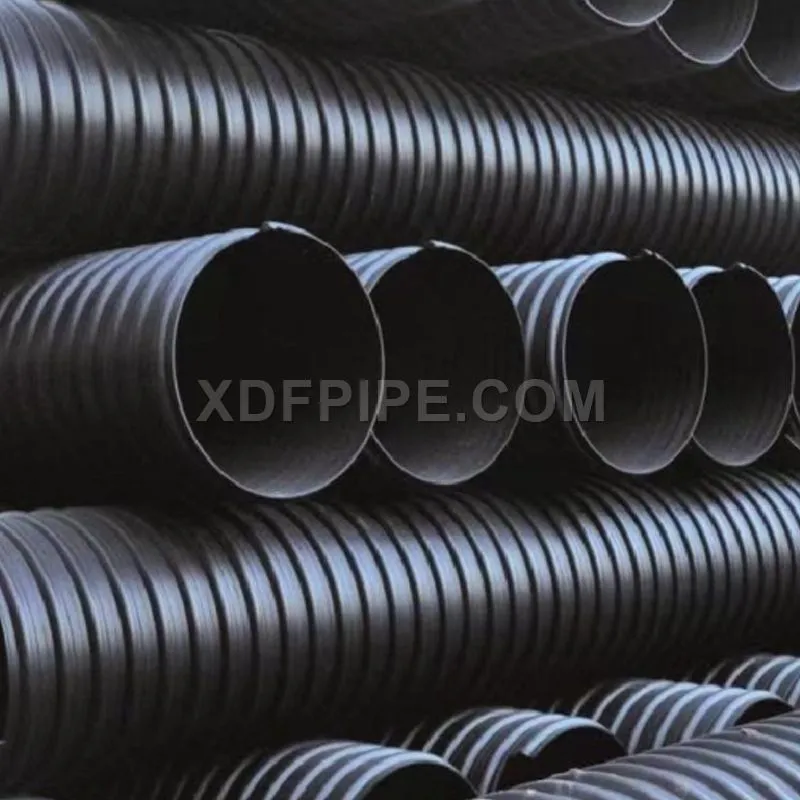When it comes to drainage systems, selecting the right type of pipe is crucial for ensuring optimal performance and longevity. PVC (Polyvinyl Chloride) and HDPE (High-Density Polyethylene) are two popular choices, each with its unique characteristics. In this comprehensive guide, we delve into the differences between PVC and HDPE drainage pipes to help you make an informed decision for your specific needs.

PVC Drainage Pipes: A Closer Look
Composition and Characteristics
PVC a synthetic plastic polymer, is widely recognized for its durability and versatility. The material is renowned for being corrosion-resistant and lightweight, making it an ideal choice for various applications, including drainage systems. The smooth interior of PVC pipes ensures efficient water flow, minimizing the risk of clogs.
Cost-Effective: PVC pipes are generally more affordable than their HDPE counterparts, making them a budget-friendly option for drainage solutions.
Ease of Installation: The lightweight nature of PVC pipes simplifies the installation process, reducing labor costs and installation time.
Chemical Resistance: PVC exhibits excellent resistance to various chemicals, making it suitable for environments with potentially corrosive substances.
HDPE Drainage Pipes: Exploring the Advantages
Material Composition and Strength
HDPE on the other hand, is a thermoplastic known for its high strength and flexibility. The material boasts exceptional resistance to impact, making it an excellent choice for applications that demand robust performance. HDPE drainage pipes are renowned for their longevity and ability to withstand harsh environmental conditions.
Key Benefits of HDPE Drainage Pipes
Durability: HDPE pipes have a longer lifespan compared to PVC, making them an investment in long-term drainage infrastructure.
Recommended article:Advantages and Applications of PE Protective FilmLatex Glove Production Line: Are Sustainable Practices the Future?Can HDPE Pipe Be Used for Gas?What Type of Plastic is A Plastic Flat Tray?What Material Is Used for High-Pressure Seals?Exploring the Versatility of Silicone Sealing ValvesRPET: Transforming Plastic Waste into Sustainable SolutionsFlexibility: The flexibility of HDPE pipes allows for easy adaptation to changing ground conditions, minimizing the risk of cracks or breaks.
Environmentally Friendly: HDPE is a recyclable material, contributing to sustainability efforts and reducing environmental impact.
Comparative Analysis: PVC vs. HDPE
Cost Considerations
While PVC pipes are more cost-effective upfront, it's essential to consider the long-term costs. HDPE's superior durability and longevity often result in lower maintenance expenses and fewer replacements over time, offsetting the initial cost difference.
Environmental Impact
HDPE takes the lead in environmental considerations due to its recyclability. PVC, while versatile, may pose challenges in disposal and recycling processes.
Application Specifics
Choosing between PVC and HDPE should be based on the specific requirements of your drainage system. PVC may be suitable for lighter-duty applications, while HDPE excels in heavy-duty scenarios with demanding environmental conditions.
Conclusion
In conclusion, the choice between PVC and HDPE drainage pipes depends on various factors, including cost considerations, environmental impact, and the specific demands of your drainage system. Both materials have their strengths, and understanding their unique features is essential for making an informed decision.
Recommended article:Revolutionizing Sustainability: The Power of rPET BottlesRPET Fabric: What You Need to KnowHDPE Corrugated Pipes: Unveiling the Technical Specifications for Superior PerformanceCommon Uses of High-Density Polyethylene5 Things to Know Before Buying pipe floatsWhat is the Advantage and Disadvantage of Dredge Pipe Floats For SaleMesh fabric - light and breathable fabric | CottonBee blog



Comments
All Comments (0)
Related Articles
7 Key Options To Consider When Sizing A Filter Press
Feb 5, 2019 — 1. Filter Press plate design · 2. Filter Press plate support beam designs · 3. Filtrate water discharge options · 4. Filter Press feed pumps · 5.
By May
135
0
0
Spiral Mesh Belt: The Key to Efficient Coal Washing
Spiral mesh belt: The key to efficient coal washing.
By Steve
141
0
0
How to optimize printing with filter press belts?
How to optimize printing with filter press belts?
By Daisy
138
0
0
What are the benefits of spiral mesh belt Petrochemicals?
Spiral mesh belt conveyors play a crucial role in the petrochemical industry, providing numerous benefits that contribute to the efficiency and success of petrochemical processes.
By Ingrid
139
0
0